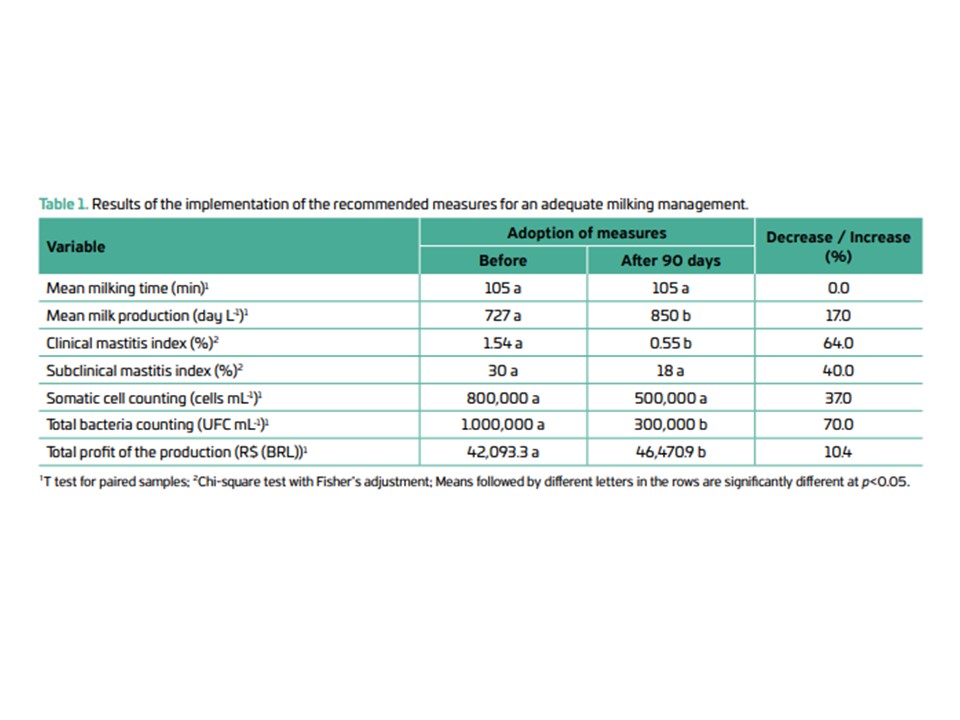Economic and production aspects of milking management in dairy farming
DOI:
https://doi.org/10.21708/avb.2022.16.2.10822Resumo
The Brazilian dairy sector is important for the world agricultural production; however, it presents problems in production efficiency and milk quality, since the occurrence of mastitis in the herds can reach 47%. The present study analyzed data from a rural property with 100 lactating cows in a semi-intensive breeding system, which did not adopt adequate hygiene management for milking processes. Corrective measures were proposed, such as daily strip cup test, biweekly California Mastitis Test, formation of a new milking line, and daily pre dipping and post dipping and cleaning of teat cups. Milk samples from 10 animals with positive clinical mastitis, 10 animals with positive subclinical mastitis, and from the cooling tank were collected at one day before and 90 days after the implementation of the proposed measures and sent to a laboratory for analysis of somatic cell counting (SCC) and total bacteria counting (TBC). An increase of 17% in milk production and decreases of 64% and 40% in clinical and subclinical mastitis, respectively, were found after 90 days, with a consequent decrease in SCC and TBC. The milking duration ahttp://abelhaseplantas.cria.org.br/fter this period denoted an adaptation of the employees to the new procedures. The production financial yield was calculated based on the implementation costs of the adopted adequations and increases in milk production, representing a profitability increase of 10.4%. The implemented adequations were efficient for the control of mastitis and increase in milk yield and quality, resulting in a positive economic return.
Downloads

Downloads
Publicado
Edição
Seção
Licença
Copyright (c) 2022 Acta Veterinaria Brasilica

Este trabalho está licenciado sob uma licença Creative Commons Attribution 4.0 International License.
Autores que publicam na Acta Veterinaria Brasilica concordam com os seguintes termos: a) Autores mantém os direitos autorais e concedem à revista o direito de primeira publicação, com o trabalho simultaneamente licenciado sob a Licença Creative Commons Attribution que permite o compartilhamento do trabalho com reconhecimento da autoria e publicação inicial nesta revista. b) Autores têm autorização para assumir contratos adicionais separadamente, para distribuição não-exclusiva da versão do trabalho publicada nesta revista (ex.: publicar em repositório institucional ou como capítulo de livro), com reconhecimento de autoria e publicação inicial nesta revista. c) Autores têm permissão e são estimulados a publicar e distribuir seu trabalho online (ex.: em repositórios institucionais ou na sua página pessoal) a qualquer ponto antes ou durante o processo editorial, já que isso pode gerar alterações produtivas, bem como aumentar o impacto e a citação do trabalho publicado (Veja O Efeito do Acesso Livre).


 Esta obra está licenciada com uma Licença
Esta obra está licenciada com uma Licença 